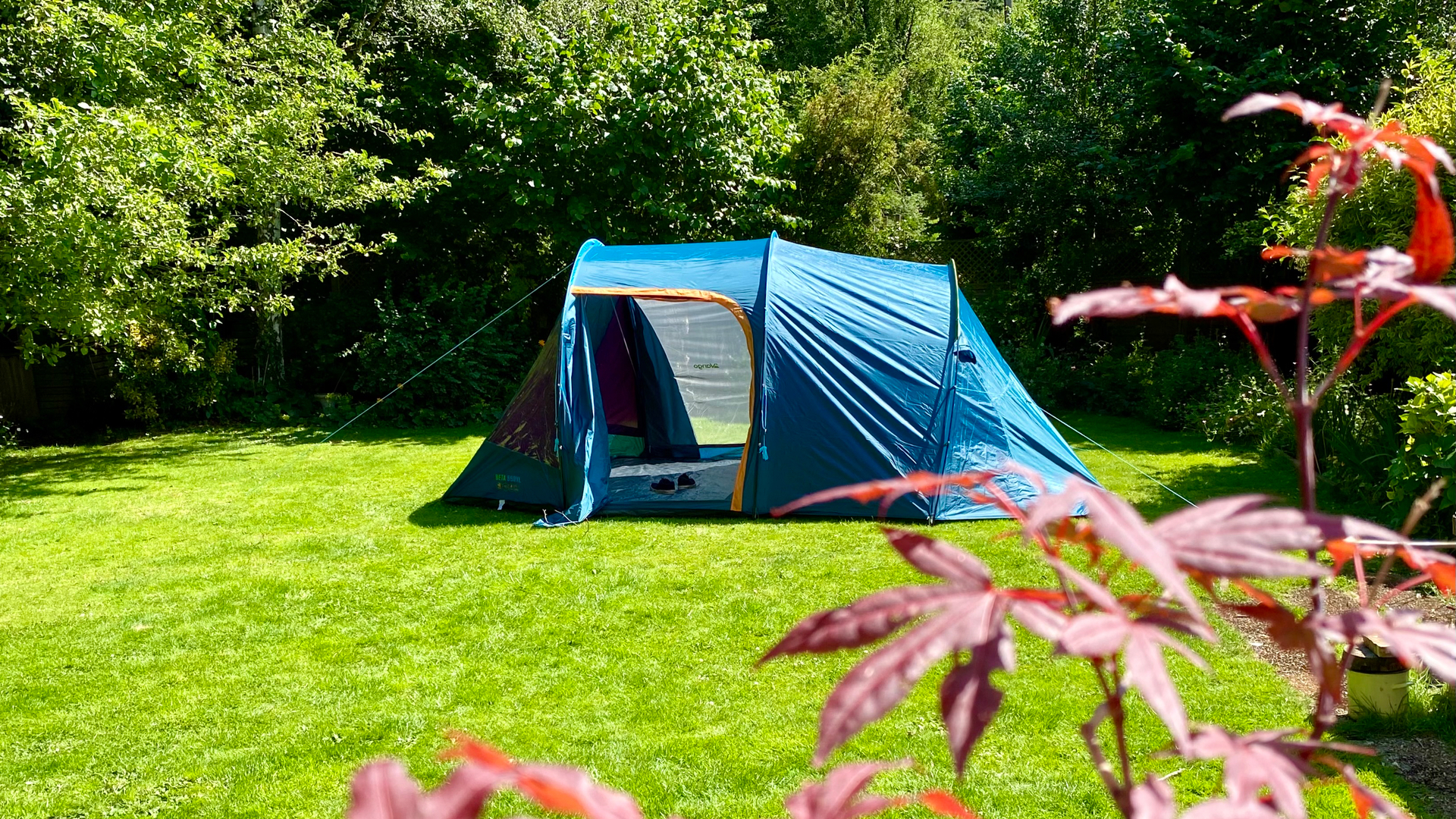
Welcome to T3’s Vango Beta 550XL CLR review, a lightweight five-person, two-season tent with a huge living area, darkened bedroom, a hydrostatic head of 3,000, wind-defeating internal straps and some commendable green credentials. While the Vango Beta 550XL CLR won’t reach the top spot in our handy guide to the best tents, it’s a worthwhile investment for a spacious and comfortable weekend with nature. Let’s pop inside for a closer look.
Vango Beta 550XL CLR review: price and availability
The Vango Beta 550XL CLR retails between £225 and £350 and is available from a number stores, including Vango, Amazon, OutdoorGear and Outdoor World. It’s smaller three-person sibling, the 350XL, is available from Argos, priced at £230.
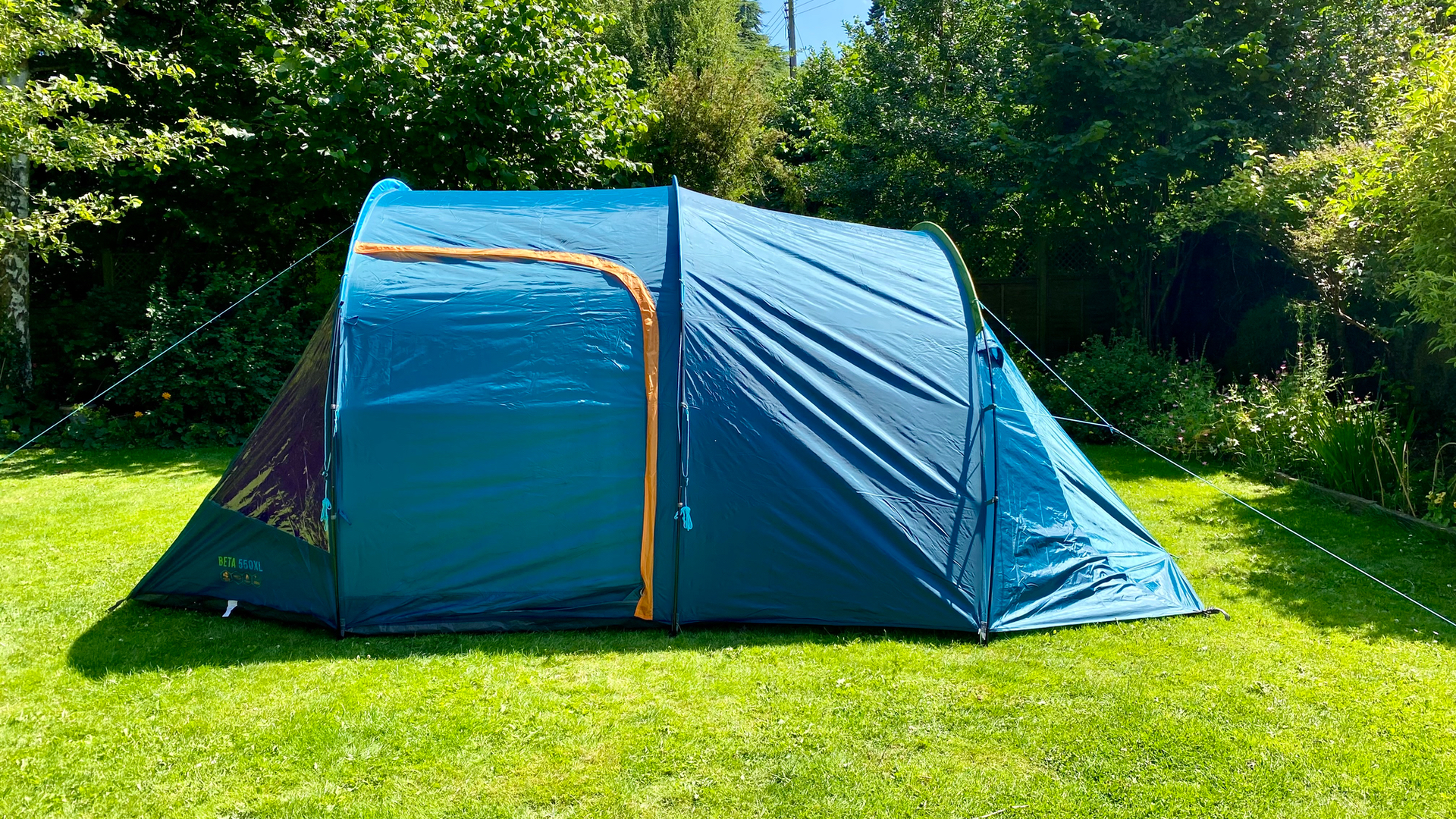
Vango Beta 550XL CLR review: design
The Beta 550XL CLR is a three-pole, two-season tunnel tent with a flysheet that’s made from waste plastic. Vango calls it Sentinel Eco fabric, and while it feels very thin to the touch, the flysheet does sport a hydrostatic head of 3,000, which is good enough for heavy-ish rain but possibly not a full-blown storm. According to Vango, the Beta 550XL has been ‘fully wind and rain tested to standard EN ISO 5912’.
However, the blurb also goes on to say that while the tent is ‘suitable for use in wet weather for occasional and weekend camping, storms and extreme weather should be avoided.’ I never experienced a downpour when testing it, but, judging by comments online, the Beta series holds up very well to a dose of UK rain. However, I would suggest heeding Vango’s advice and remember that this model is ostensibly designed for just a few days away and not a full-blown two-week camping trip.
At this juncture, I should add that all tent manufacturers continue to list the sleeping capacity of their tents in an optimistic fashion that bears zero resemblance to the real world. Hence, if you want some personal space and a good night’s sleep, always go for a tent at least twice the size of the stated occupancy. This is true of the Beta 550XL, which is designed for five people sleeping side by side on mats no wider than 60cm in width (the average single airbed width is 70cm).
Personally, I think five people is really pushing it unless you want to sleep shoulder to shoulder and constantly trip over each other while getting ready for bed. Having set it up and measured the internal dimensions of the bedroom (an extremely spacious three metres in width), I would say that this tent is a perfect size for three but even better for two. This would allow for much more elbow room and loads more space to spend time inside and store individual belongings.
Aside from the ample 3m x 2.10m bedroom, the Beta 550XL also benefits from a huge 7.5m2 of lounging space that measures 3.15m in width and 2.5m in length. Obviously, the front section tapers considerably, but there’s still enough space in this living section to accommodate a table and four chairs, plus all your belongings. In fact, there’s enough room inside to swing the proverbial cat.
Head height is a major consideration when choosing a tent, and in this regard, the Beta 550XL truly excels with an amazing 2m of elevation – tall enough for a six-footer to walk around without having to stoop. Although the bedroom ceiling is 10cm lower, it still has enough height for you to get ready for bed without having to crouch.
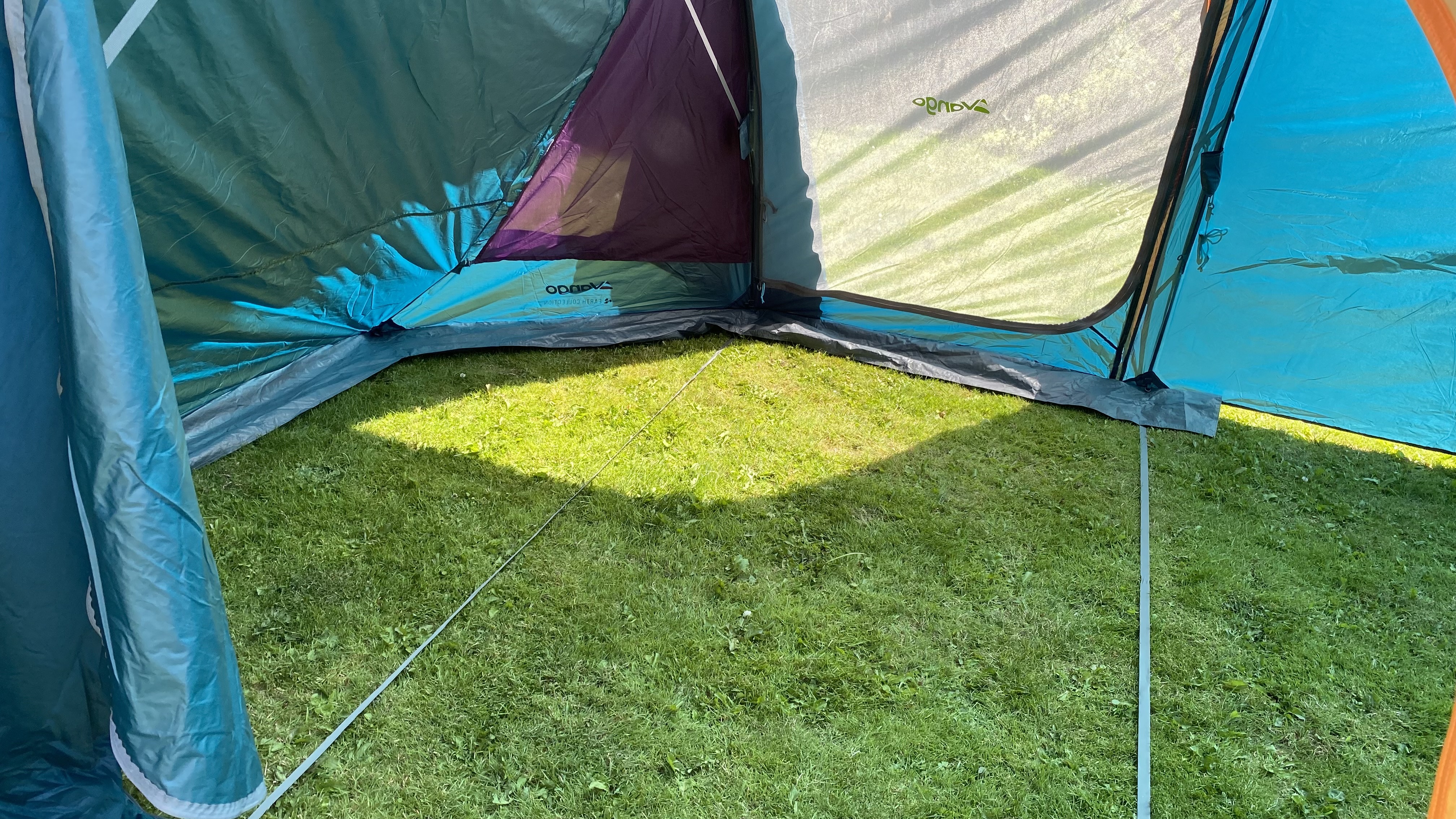
Having already tested the exceptional Coleman Air Valdes with sewn-in groundsheet, I was a little alarmed to discover that this model’s waterproof PE groundsheet and bedroom compartment are separate entities, and the inner section needs to be attached to the flysheet after the flysheet has been pitched. Many tent manufacturers still use this configuration, and it’s true that it does make the groundsheet easier to wash separately.
However, it also makes it much more tiresome to pitch because you have to connect the groundsheet and the bedroom compartment to loads of hooks which is no fun if it’s scorchingly hot inside. In fact, I would recommend leaving the inner groundsheet and bedroom compartment attached to the flysheet when disassembling the tent. This will save a lot of bother when it comes time to pitch the tent again.
Thankfully, the flysheet itself has about six inches of groundsheet material sewn into its inner edges, and the main groundsheet lays above it, so rainwater runs under the groundsheet and not into the tent. I didn’t experience any such weather during my test, but it looks like a robust enough system to me.
However, this design may also instil a little apprehension if the heavens open and you’re pitched on a slight slope with water gushing down. But as I’ve already mentioned above, many tent manufacturers use this two-tier pitching method, and I’ve personally not had any issues with systems like this when camping in the past.
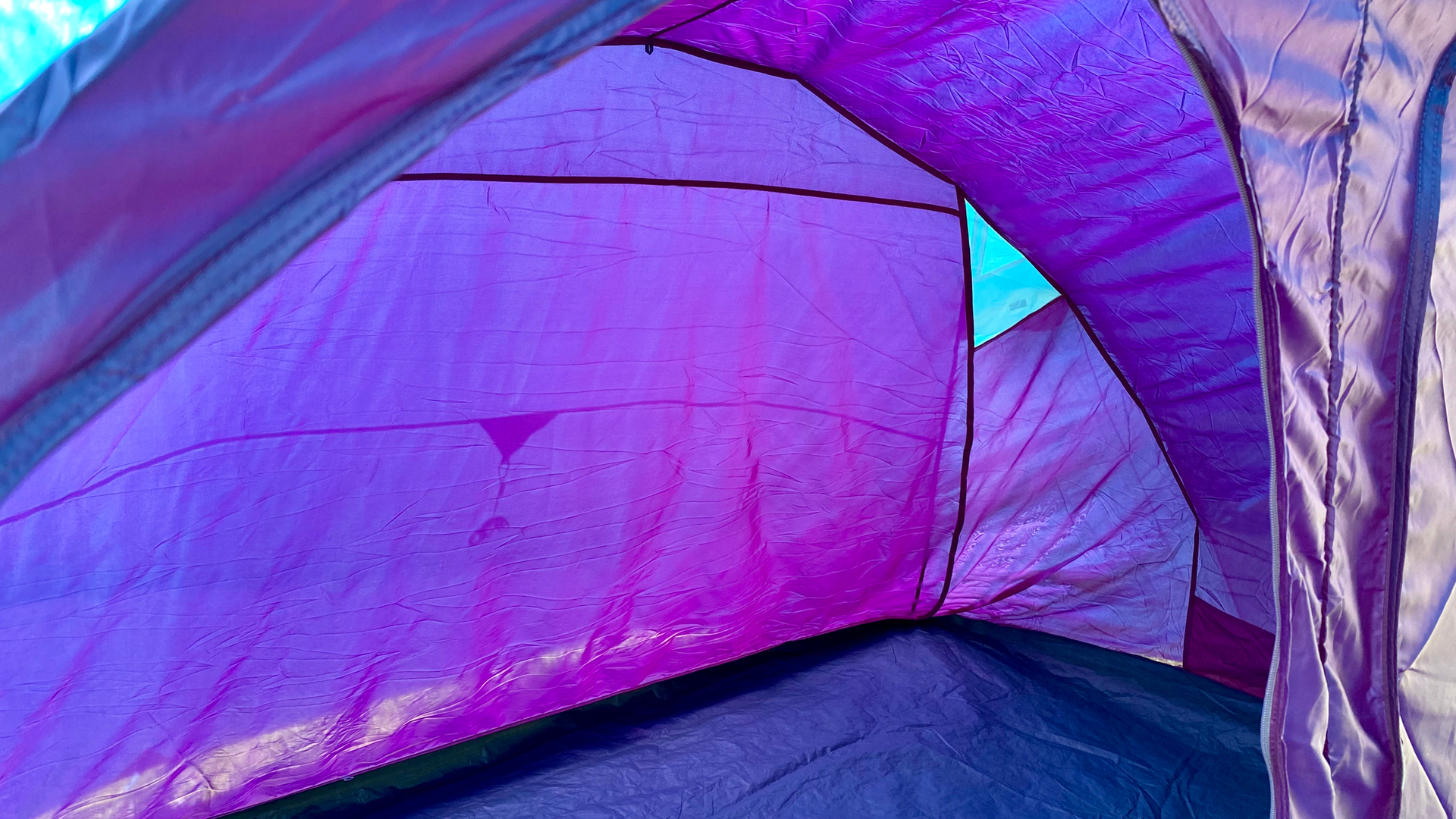
Heading back to the bedroom, this model comes with Nightfall – Vango’s version of blackout material – so you’re not awoken by the morning sun, which in midsummer can be as early as 4.40 am. However, unlike Coleman’s proprietary Blackout material, which almost completely darkens the room no matter how bright it is outside, the Vango’s is more of a dark purple colour that still glows enough to see what you’re doing.
Personally, I prefer the Coleman system, which blocks out all light, including lightning, to some degree. That said, the deep purple glow this model provides is actually quite soothing, and it certainly works well enough at sunrise. The bedroom itself is one large sleeping space with no dividers. However, it does have zipped tunnel doors on either side – one large, the other small.
Most tents have a wide front entrance with either one or two side doors. This type of configuration is admittedly better for orientating the tent towards a nice view so you can open the front and enjoy the vista from the comfort of an airbed. However, it often means clambering over belongings because there is nowhere to store them out of the way. Hence, this model has a sealed front end with two triangular Diamond Clear Windows that can be covered with the provided clip-on covers for privacy.
Since there are no doors in the way, this type of configuration is great for storing belongings in the area where the front tapers down and where you’re never going to be walking. Having two entrances also increases ventilation when the heat is on. On the downside, it may mean orientating the Beta 550 side-on so you can see the view from either of the two side entrances. On the plus side, both entrances are nice and wide, with just a short three-inch lip of groundsheet fabric to step over. Sadly, only one entrance is fitted with insect mesh.
That’s the basic design elements out of the way; let’s take a look at some of the Beta 550XL’s special features.
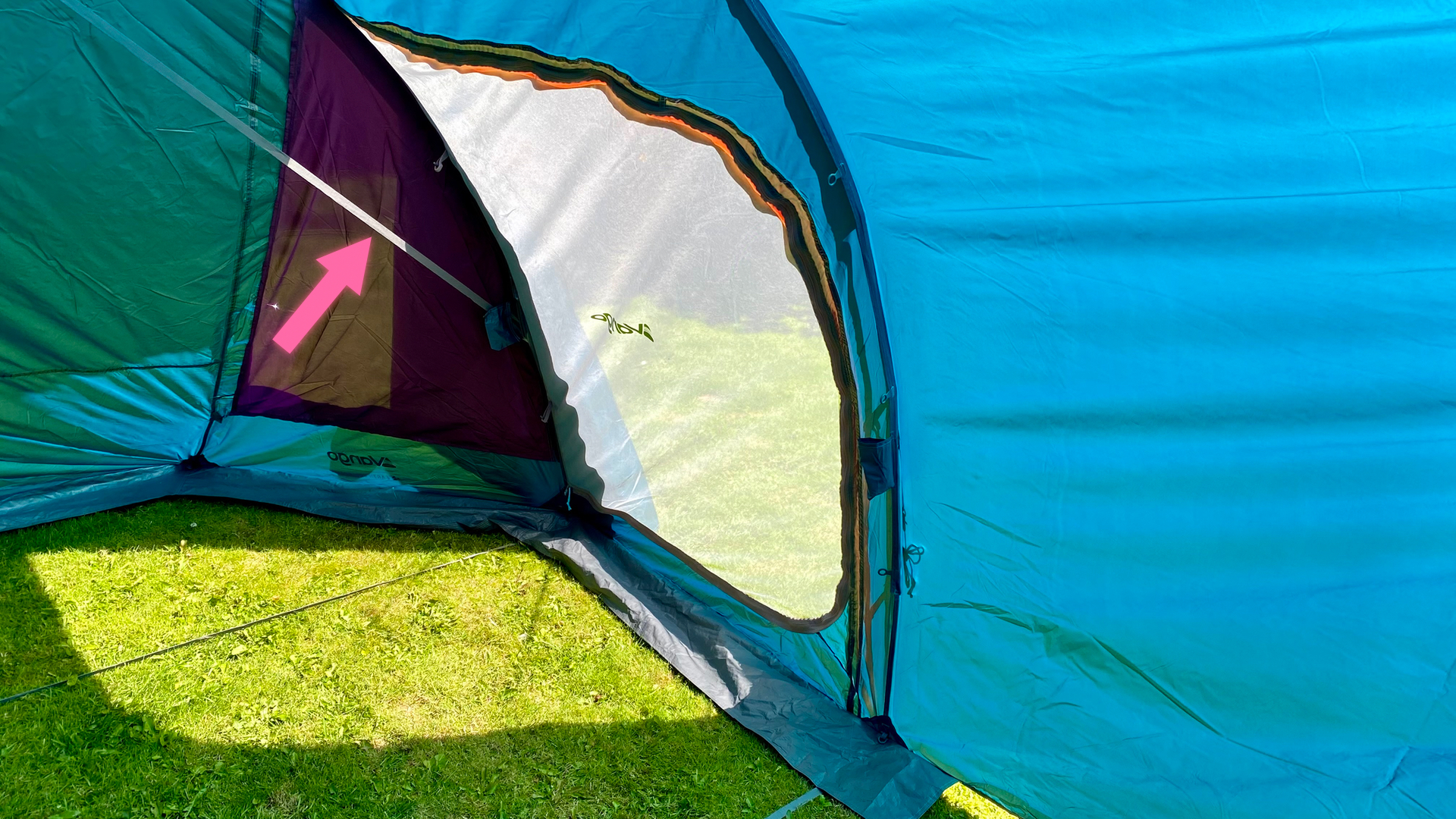
Vango Beta 550XL CLR review: features
The problem with tunnel tents like this is that they tend to rock from side to side in higher winds, making it feel as if the tent is either about to collapse or lift off the ground. Vango defeats physics in this regard by equipping the 550XL with a TBSII Tension Band System comprising two straps that brace the front pole at three points in line with the exterior guy-ropes, and this dramatically reduces sideways movement in high winds. Yes, the two straps do restrict movement in the living area, but they can be easily unclipped and tucked away in the two provided side pockets when not required.
With regard to a tent’s old enemy – condensation – this model provides about two inches of air space between the inner bedroom’s breathable polyester inner and the flysheet. Bedroom ventilation, meanwhile, is provided by two small portholes on either side of the rear. No, it’s not ideal during the day when it’s especially hot, but the ports work fine at night without letting in too much cold air.
The Vango Beta 550XL comes with several lantern hanging points in the bedroom and living area and plenty of storage pockets for torches, maps, water bottles, etc.
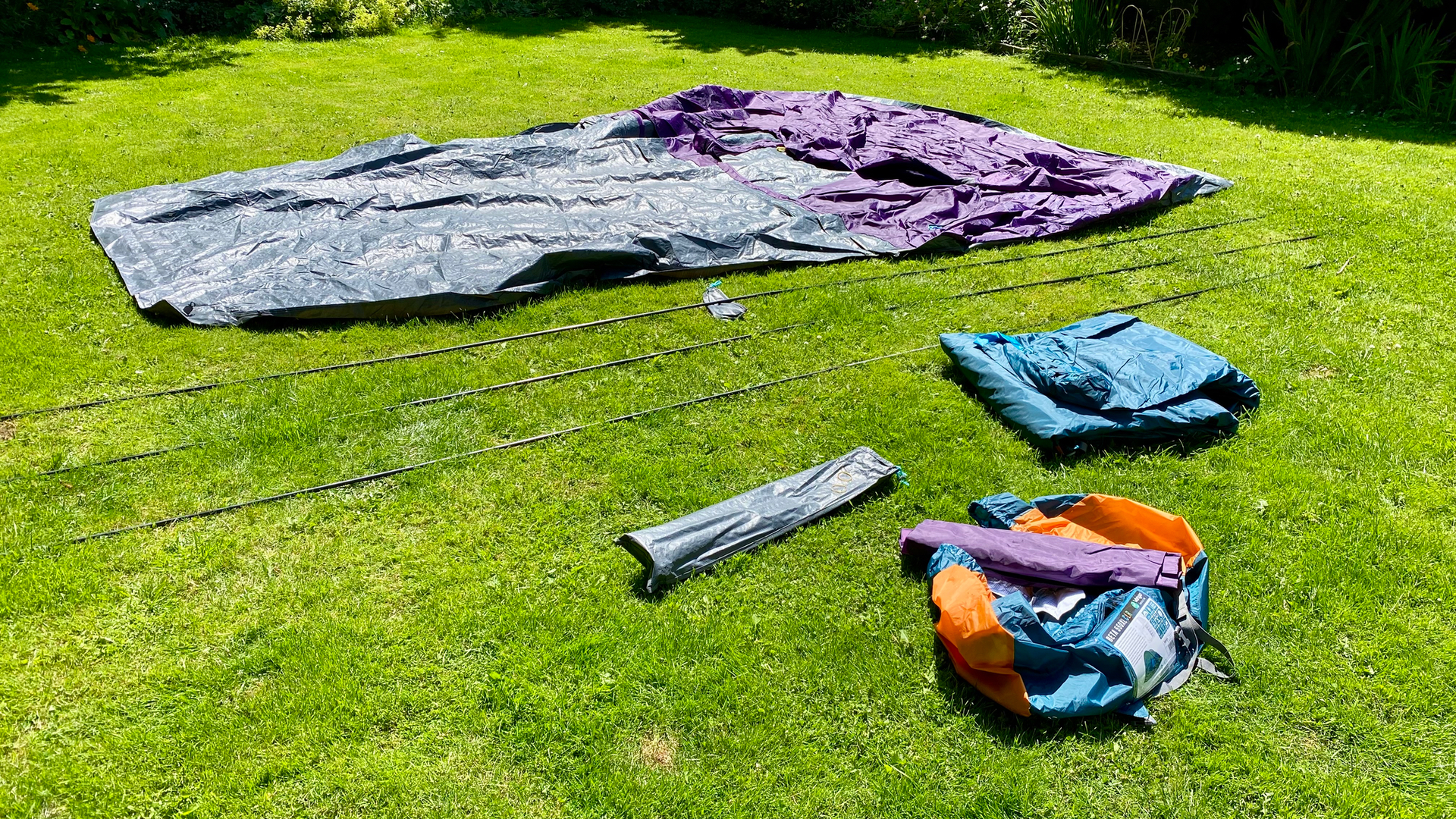
Vango Beta 550XL CLR review: pitching method
As alluded to above, this model requires pitching the outer fly sheet first and then the inner groundsheet and bedroom compartment. Despite this, I found it was really easy to put up though I did require a second pair of hands when it came to installing the colour-coded PowerFlex fibreglass poles.
Like all pole tents, it involves sliding each pole through a sleeve and into a connector and then bending the free end of the pole so it slides over the connector on the other side. Fear not if you think the pole is about to break as you add the extra force required because these poles are designed to bend a lot in order to create a rigid structure.
Once the outer flysheet is pitched and partially pegged down, it’s time to drag in the inner section and start rummaging about on your knees to fix the inner groundsheet to the main flysheet and then stretch to all edges of the ceiling to attach the bedroom compartment. I found this a real faff and decided to leave the whole inner section in situ to make pitching at least 20% quicker next time. In all, I guess it took two of us about 20 minutes to fully complete the assembly with all guy ropes in position.
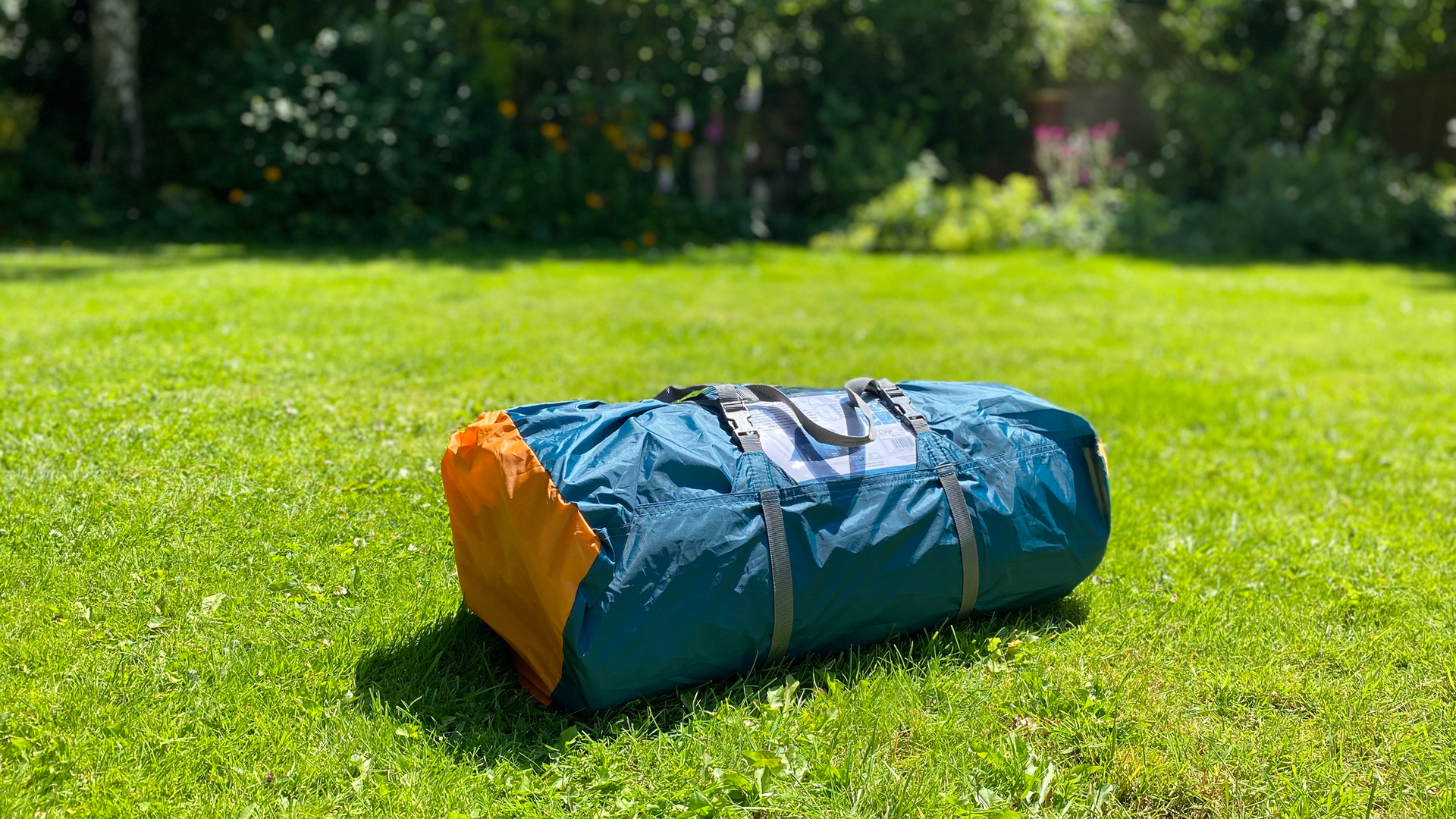
This brings me to the worst thing about camping – packing it all away. You know the scenario… You’re either rushed to get out of the campsite in time for checkout, or there’s rain on the horizon, and you need to get the tent down quickly and fold it up into a neat package small enough for the bag it arrived in.
Yeah, sure; have you seen the size of the bags some tent manufacturers provide? They’re tiny, while the tents themselves are folded and packed by professionals who do it day after day. It’s, therefore, a truly great thing to come across a tent that comes in a much bigger bag than normal (65 x 29cm), ensuring the tent will fit no matter how badly it’s been folded. Top marks in this respect.
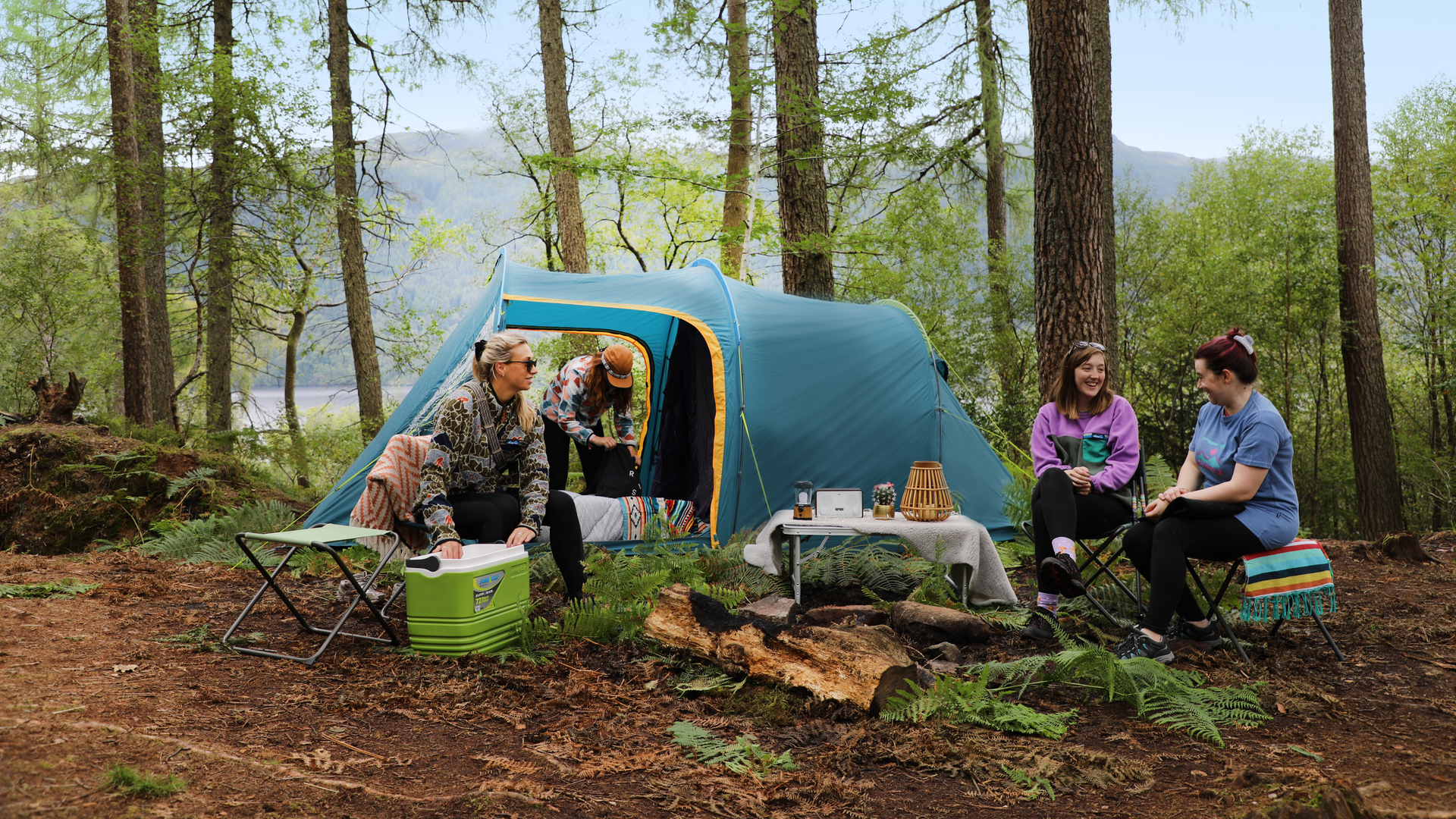
Vango Beta 550XL CLR review: performance
As I’ve already pointed out, I managed to avoid inclement weather during my test though I do feel very confident about the Beta 550XL’s 3,000 HH waterproof rating, which is a lot better than most cheaper weekend tents.
Aside from some hot work installing the groundsheet and bedroom, the two of us – plus two labradors – had an excellent night’s sleep in the huge bedroom. We loved the bedroom’s Nightfall effect, too, which felt cosy while masking dawn very effectively. However, I would have preferred a little more bedroom ventilation, although I did get around this by partially opening one of the side entrances with the mozzie mesh in place.
I personally didn’t miss the lack of view from the front because I’ve never lain in bed in the morning with the front open. I did, however, appreciate the amazing head height, overall interior space and the bonus of having the extra storage space at the front to keep stuff out of the way of our feet. I also loved the low thresholds on both doors and the bedroom because I’m forever tripping over them when entering and exiting.
Finally, a shout-out to the designers for fitting those handy stabilisation straps. It was quite windy on our first night, and these straps made a big difference to the rigidity of the outer shell. As a result, we got a good night’s sleep with very little buffeting.
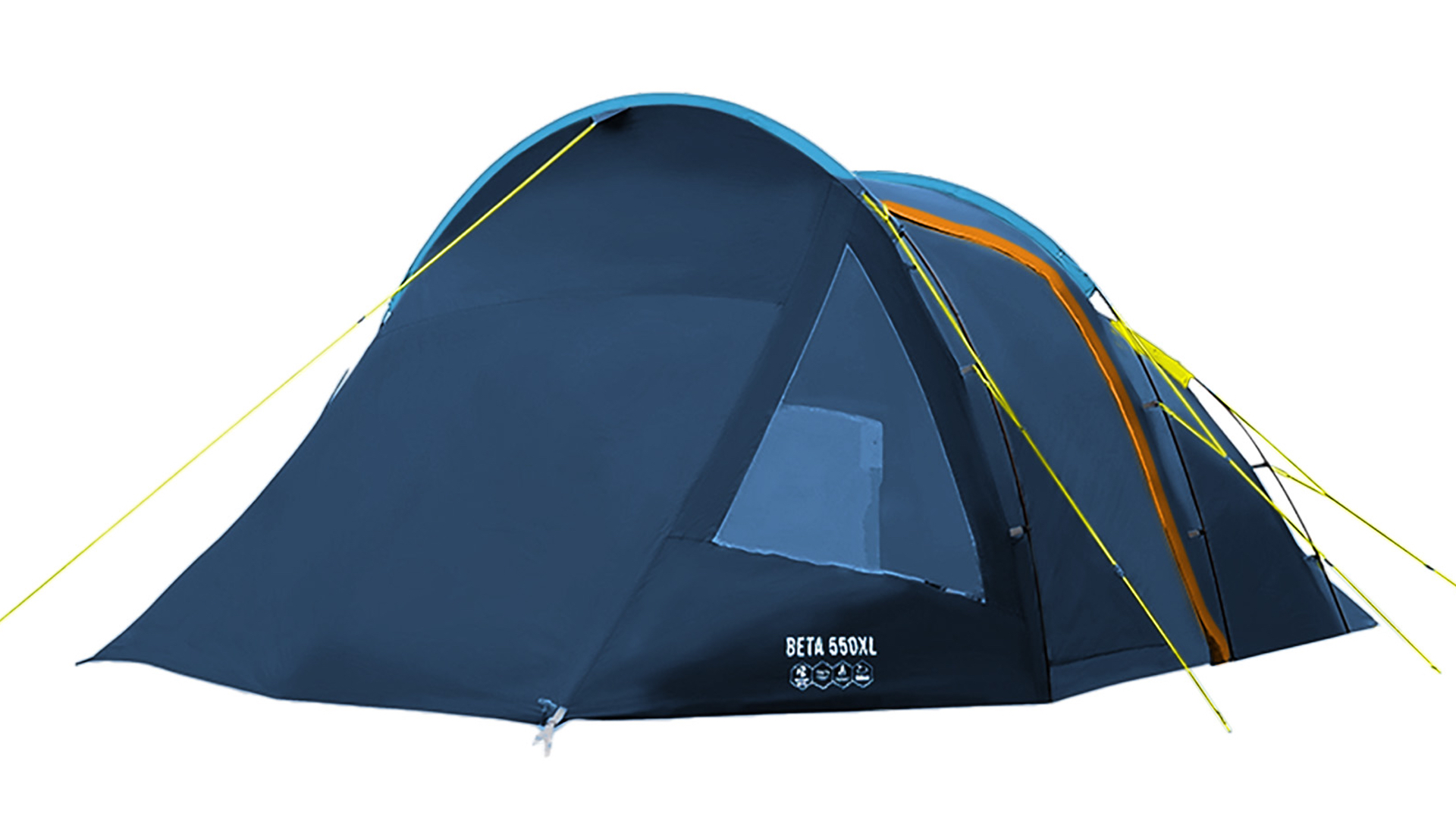
Vango Beta 550XL CLR review: verdict
If you’re looking for a well-designed and exceedingly spacious weekend tent for two or three, the Vango Beta 550XL CLR is a top choice, despite the rigmarole of fitting the inner groundsheet and bedroom compartment separately.
At just 10.4kg in weight, you can carry this tent a fair distance without your arm falling off, and you will really appreciate the oversized bag that makes it very easy to repack. But above all, it’s the spaciousness within and the generous two-metre headroom that make this model a veritable shoo-in for any short two-season camping adventure.







